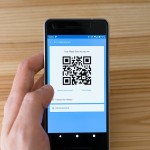Have you received an SMS lately mentioning a 5G upgrade, SIM block, suspension, or pending KYC verification? If so, be cautious! These could be phishing scams designed to steal your personal and financial information.
In today's digital world, where most transactions happen online, fraudsters are becoming more sophisticated. Phishing is a common tactic where they try to trick you into revealing sensitive information by posing as a legitimate source, like your mobile network provider.
Reports suggest a tripling of phishing attacks handled in India from 2021 to 2022 (1.39 million in 2022). Estimates suggest around 30 crore (300 million) Indians are vulnerable, with 5 lakh (500,000) potentially falling victim annually.
This article will explain how to identify these scams and protect yourself from financial loss.
What is a Phishing Scam?
Imagine receiving a text message that appears to be from your mobile network provider, Vi. The message might say your SIM card will be blocked unless you "upgrade" it for 5G or that your KYC (Know Your Customer) documents need immediate verification. Feeling a sense of urgency, you might call the number provided or click on a link in the message.
This is where the scam unfolds. The number could connect you to a fraudster pretending to be a customer service representative. They might ask you to download a fake app to "verify" your details or click on a link that takes you to a fraudulent website designed to steal your passwords, OTPs (One Time Passwords), or bank account information.
How to Identify Phishing Scams
Here are some red flags to watch out for:
Table of contents [Show] Urgency and Pressure | Phishing messages often create a sense of urgency by threatening to block your SIM card or account. Don't panic! Legitimate companies will give you ample time to take action. |
Sender Information | Check the sender's number. Most genuine messages from your network provider will come from a well-known ID like "ViCARE" in this case. |
Suspicious Links | Don't click on any links in the message, even if it seems legitimate. Always access your mobile network provider's website by typing the address directly in your browser. |
Grammatical Errors | Phishing messages often contain typos or grammatical errors. A legitimate company will have a professional tone in their communication. |
Request for Personal Information | Never share your passwords, OTPs, bank account details, or any other sensitive information over SMS or phone calls unless you are absolutely certain you are speaking with a legitimate representative. |
How to Protect Yourself
Here are some simple steps to safeguard yourself from phishing scams:
Verify the Source | If you receive a suspicious message, don't respond or call the number provided. Contact your mobile network provider directly through their official customer care number or website to clarify the situation. |
Two-Factor Authentication (2FA) | Enable 2FA on all your online accounts, including your bank accounts and mobile wallets. This adds an extra layer of security by requiring a unique code sent to your phone in addition to your password when logging in. |
Strong Passwords | Use strong and unique passwords for all your online accounts. Avoid using the same password for multiple accounts. Password managers can be helpful to create and store complex passwords. |
App Downloads | Only download apps from trusted app stores like Google Play Store or Apple App Store. Avoid downloading apps from unknown sources or clicking on links in messages. |
Report Phishing Attempts | If you suspect a phishing attempt, report it to your mobile network provider and the National Cyber Crime Portal of India [https://cybercrime.gov.in/]. |
Remember
By staying vigilant and following these tips, you can protect yourself from falling victim to phishing scams. Don't hesitate to reach out to a trusted family member or friend if you're unsure about the legitimacy of a message. Remember, it's always better to be safe than sorry!








